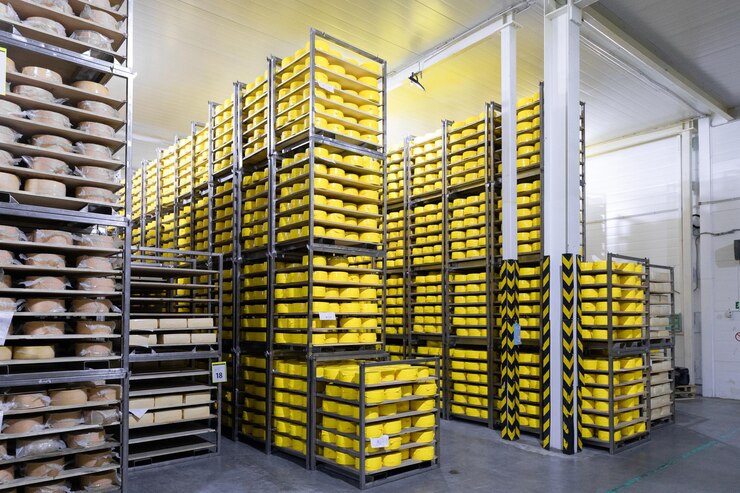Mannual Mobile Racking System

A Manual Mobile Racking System is a type of storage solution that allows racks to be moved along tracks, creating adjustable aisles for accessing stored goods. Unlike static racking systems, where the aisles and racks are fixed in place, manual mobile racking offers the flexibility to move the entire racking unit manually to create or close aisles as needed. This system is particularly useful in environments where maximizing storage density is a priority without sacrificing easy access to stored items.
How Manual Mobile Racking Works:
In a manual mobile racking system, the racks are mounted on mobile bases or carriages that roll along tracks embedded in the floor. The system works by moving the entire rack unit along these tracks to open or close aisles.
Key components include:
- Racks: These are the shelves that hold the pallets or goods, similar to traditional pallet racking systems.
- Mobile Bases: The mobile bases or carriages support the racks and allow them to move along the tracks manually. These bases are typically equipped with wheels or rollers.
- Tracks: The floor-mounted tracks guide the movement of the mobile racking units. Tracks are designed to be durable to support the weight of the racks and goods.
- Aisle Control: The system relies on manual operation, typically involving a hand crank or lever to move the racks. Some systems may be assisted with electrical or hydraulic mechanisms for easier movement.
Advantages of Manual Mobile Racking:
Space Optimization: By eliminating the need for multiple aisles, a manual mobile racking system allows a higher density of storage in the same amount of floor space. When the aisles are closed, storage space is maximized, and when access is required, aisles can be opened as needed.
Cost-Effective: Manual mobile racking systems are typically less expensive than their automatic counterparts because they do not require sophisticated machinery or controls. The manual operation, while slower than automated systems, is simple and cost-efficient.
Flexibility: It is a versatile system that can be adjusted according to storage needs. You can open aisles only when necessary, optimizing space and ensuring efficient storage of items.
Improved Access: With the system’s ability to open aisles manually, the racking units are easily accessible. When the aisle is opened, pallets or goods stored in the racks can be quickly retrieved, ensuring better workflow.
Simple Operation: Unlike automated systems that require specialized equipment or power, manual mobile racking only needs basic tools and human effort to operate. This simplicity is ideal for smaller operations or businesses with lower budgets.
Disadvantages of Manual Mobile Racking:
Labor-Intensive: Since the system relies on manual labor to move the racks, it can be time-consuming and require more physical effort compared to automated systems. This may be less efficient in environments that require frequent and rapid access to a large number of goods.
Limited Speed: Manual mobile racking systems can be slower to operate than automated systems, which may not be suitable for high-volume operations that require quick retrieval or storage.
Space Constraints: While it improves space efficiency, the system still requires a certain amount of floor area for the tracks and movement. For warehouses with limited space, the track layout and movement may impose constraints.
Applications:
Manual mobile racking systems are commonly used in:
- Warehouses: Where efficient use of floor space is essential, but the speed of retrieval is not the top priority.
- Libraries: For storing books and archival materials in a compact, space-efficient way.
- Cold Storage: In environments where space is limited, such as in temperature-controlled facilities for food or pharmaceuticals.
- Small to Medium-Sized Operations: Where a simple, budget-friendly solution for maximizing storage is needed without automation.
Conclusion:
Manual mobile racking systems are a highly space-efficient solution that allows businesses to store a variety of goods in a compact area by optimizing aisle space. While not as fast or automated as other systems, their flexibility, cost-effectiveness, and ease of operation make them a great choice for businesses looking to maximize storage in smaller or medium-sized facilities.